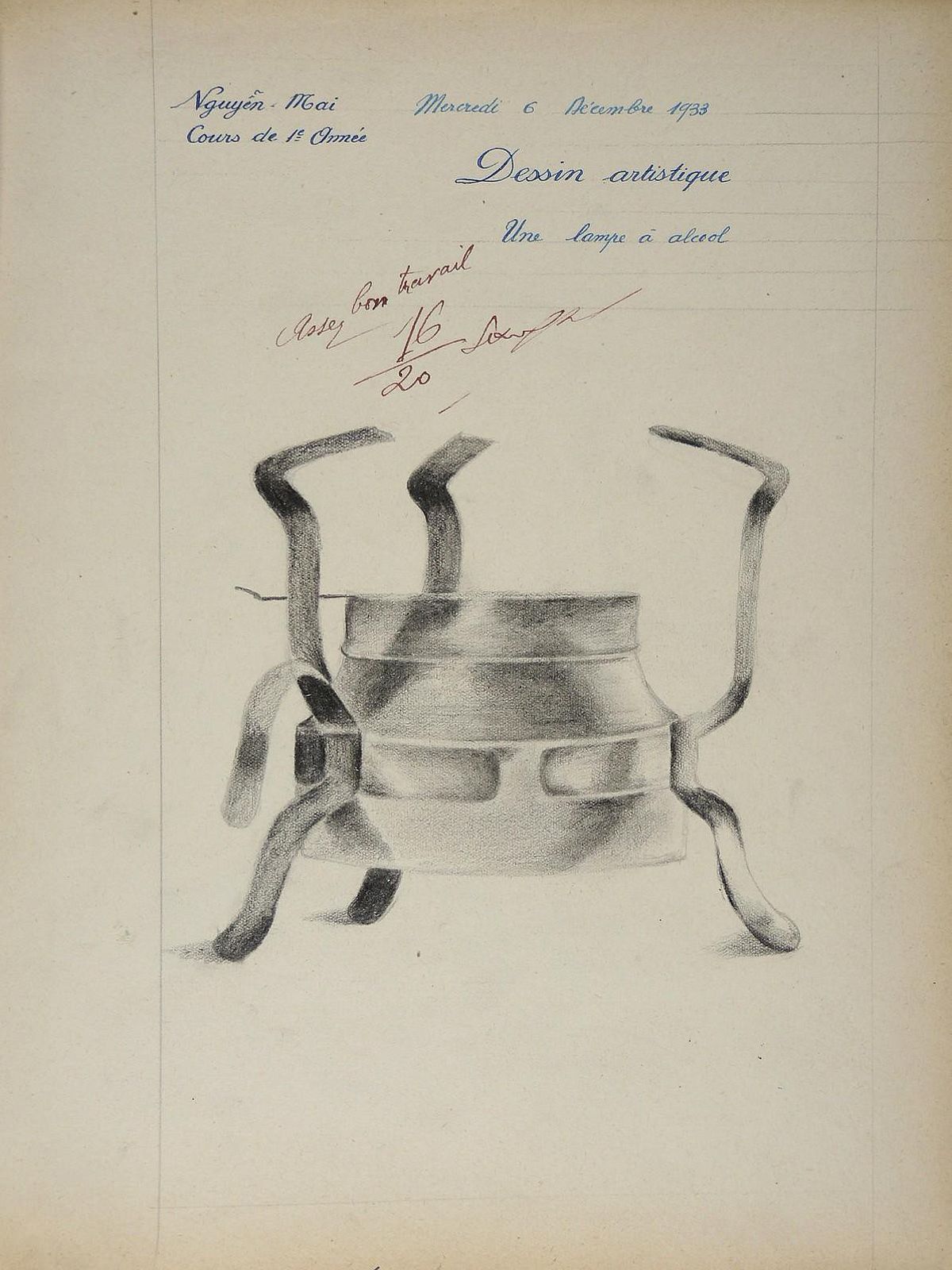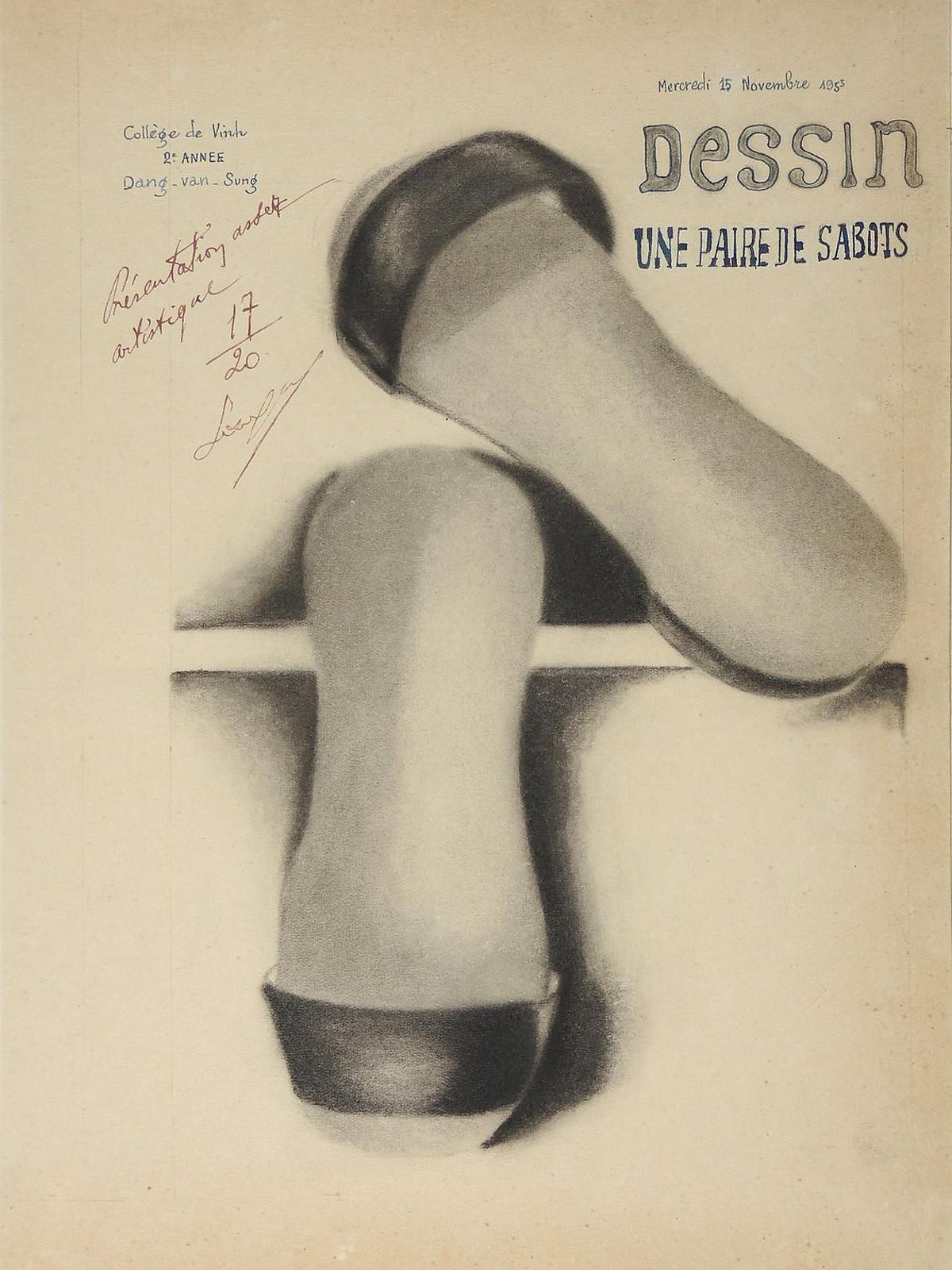Cultural artifacts like artwork can reveal fascinating insights into our ancestors’ past life, though the pieces below are far from the kind of artistic creations that get featured in museums.
This set of rudimentary drawings features neither Pablo Picasso’s famed character studies nor Egon Schiele’s expressionistic body sketches; they’re school assignments by Vietnamese students in the 1930s. In a range of different tasks, from still life of household items to decorating a plate in floral motifs, the talent — or, in some cases, lack thereof — is evidenced in the way each submission was executed.
More than mere school assignments, the sketches provide us with a glimpse inside school life during Vietnam’s French colonial era. Details like the use of red ink by teachers, the cursive and modernist typographies employed by students, and clothing items then are all on display in the sketches.

Collège de Vinh in 1920-1929. Photo via Flickr user manhhai.
Student Dang Van Sung, for example, sketched a pair of wooden slippers, or guốc mộc in Vietnamese, the footwear that bears the sign of the local tropical climate.
From the information on the sketches, they were all drawn in 1933 by students at the Collège de Vinh. According to a paper on Franco-Vietnamese schools by Tran Thi Phuong Hoa, drawing wasn’t introduced in the curriculum (1917-1945) until secondary levels, meaning these sketches were created by teenage students older than 16 years old.
Collège de Vinh was established in 1920 to serve as an institute for higher education of students from the Thanh-Nghe-Tinh area. Previously, to advance beyond elementary levels, students had to enroll in the Collège Quốc Học in Hue.
Have a closer look at the sketches below:















[Photos via Redsvn]














